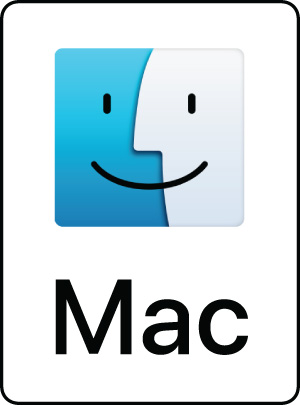 UPDATE Jan. 4, 2024. On macOS Sonoma 14.2.1, I can format and access ExFAT-formatted SSDs and thumb drives. Hopefully, this means Apple has fixed this problem.
UPDATE Jan. 4, 2024. On macOS Sonoma 14.2.1, I can format and access ExFAT-formatted SSDs and thumb drives. Hopefully, this means Apple has fixed this problem.
Mary Peterson sent me the following caution:
“Had a couple exFAT formatted drives (in case I had to share with PC client). But Sonoma is unable to mount those drives. Lots of discussion in Apple Community forums on the issue. Ended up using EaseUS software which could see into the drives and let me copy them. Some files were corrupted but was able to copy all my video clips and more. Am now making sure drives are formatted APFS. And I bought lots of cheapish external drives so I can keep 3 copies of critical files! I should have known better…”
In researching this, it appears that there are issues with ExFAT in Sonoma. Here’s a link to Apple Discussions on this topic.
Apple’s Sonoma Release Notes state:
“The implementations of the exfat and msdos file systems on macOS have changed; these file systems are now provided by services running in user-space instead of by kernel extensions. If the application has explicit checks or support for either the ExFAT or MS-DOS file systems, validate the applications with those file systems and report any issues.”
In other words, there were issues, but these may now be fixed. Maybe.
If you have critical data stored on ExFAT drives, BE SURE to copy it to a non-ExFAT volume before upgrading. It is better to be safe than sorry.
21 Responses to Caution: macOS Sonoma May Not Support ExFAT
Hi Larry,
Thanks for the post, it confirmed my experience. I had exactly the same problem with a brand-new Crucial X10 Pro SSD. I spent an hour or so with Apple Support, my new M2 and a late 2103 Macbook. We got a handle on the problem and found a workaround.
The issue prevented Resolve and Premiere from saving. Before the .1 upgrade, Sonoma could read and write to the ExFAT SSD but not very reliably. Sonoma 14.1 hates ExFAT and kills it.
It does seem you have to reformat to APFS and then the sun comes out. All seems to be working just fine now.
The support agent has informed the developers, so I guess there’ll be a less psychopathic 14.2 out in due course.
Regards
Simon
Simon:
Thanks for letting us know.
APFS is fine if we are exclusively Mac. But if we need to move files between Mac and windows, ExFAT is essential.
I hope Apple fixes this.
Larry
I highly recommend getting an ntfs for Mac driver rather than messing with exfat which has always been problematic. Paragon, Tuxera, iBoysoft, and others have commercial versions, not terribly expensive and often discounted. There is a free open source driver, NTFS-3G, which is not yet install compatible with Sonoma but you can find instructions for a hack install.
Tod:
Good to know. I’ve always been leery of NTFS.
larry
I’ve been using MacDrive on Windows machines for 15 years. I can keep my files in Mac formats (including APFS) and use them on either machine. In that time editing has been on Windows Avid, Mac Final Cut, Mac Premiere, and now Windows Premiere. Field transfer is on an M1 MacBook Pro. When I send camera footage to clients, they mostly want Mac formatted files.
Thanks!
Larry
Also latest FCP and Sonoma do not transmit signal to external monitor through Blackmagic 3-G mini-monitor.
Howard:
Good to know. Thanks!
Larry
Been using Paragon for years. Works great
Al:
Good to know.
Thanks!
Larry
I have to say I formatted a Crucial X10 Pro 2TB SSD to ExFat in Sonoma on an M2 MBP running Sonoma 14.1 that I have used for shuttling between myself and the post house… and it’s been working fine. It mounts, reads and writes.
Guess I’m lucky then?
However, since reading this article, I have backed it up to an APFS SSD drive!
Andrew:
It is always good to know when something works. Thanks for writing.
Larry
On Sonoma rsync and cp are both not working properly with ex-fat. Rsync gives all copied files today’s date and does not retain the original file date. This has affected the wonderful copy app dropsync. At the moment, it can be used only with external drives in apple native formats.
Mark:
Good to know. Thanks,
Larry
ExFAT drives seem to work fine in Sonoma (I’m using 14.1) if you format it with Allocation Unit Size to 128K. To do that in Windows, use Disk Manager, Format, and set the Allocation Unit Size to 128K (don’t use Default, it’s 1024K in Windows).
Cheers.
Thanks buddy. That has solved the problem for me. I’m not sure what Allocation Unit Size defaulted to when I formatted it originally in Monterey, but doing it in Windows, with 128K, has worked. Thank you for posting.
Further to this.. It works. but it is painfully slow for me. approx 10 times slower with the same external SSD – Samsung T5. Was approx 1GB/s, now 0.1GB/s. This is for a small number of large files.
Although it does work.
I formatted again in Sonoma as exFat and it’s fine now.
Chris:
Thanks for the update.
Larry
So in summary if I partition an external drive to exFat for the Windows files i should be able to read and write to the exFat files from a MacBookPro [2021 M1].
Ed:
Interesting. I haven’t tried this, but partitioning a drive with one side HFS+ (or APFS if it is an SSD) and the other ExFAT should enable the ExFAT version to be read on Windows.
Try it and let me know what happens.
Larry